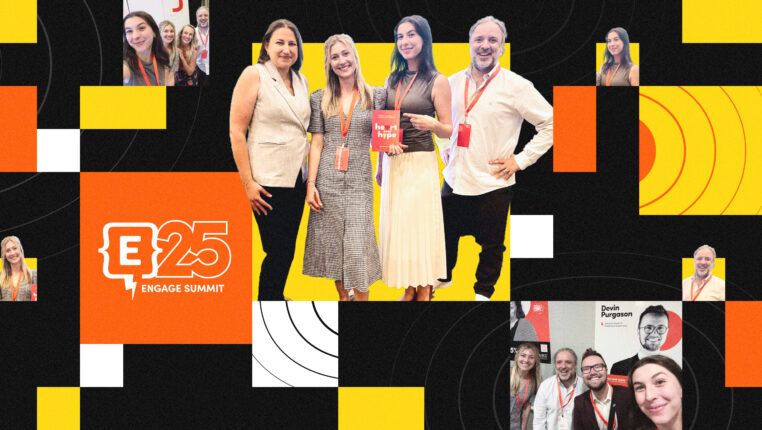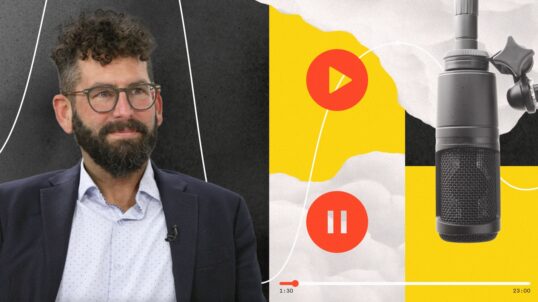Can you feel it?
The leaves are turning, students have returned to campus, and football fields are active again.
And in admissions offices across the country, administrators are packing and shipping viewbooks, ironing banners, and booking flights and hotels.
It’s recruiting season once again.
A few weeks ago, we covered how schools can take an inbound approach to college fairs by setting goals, choosing a call-to-action, creating dedicated landing pages, and being a resource. Today, I want to help you take the next step in that approach. Because while admissions administrators exert considerable energy and preparation into making sure each student they meet leaves their table with a smile, college fairs can have an impact on your admissions marketing strategy far beyond event day. How? I’m glad you asked. Here are three ways you can use college fairs to positively impact your inbound marketing tactics going forward.
Buyer Personas
Buyer personas are the foundation of your inbound marketing, and all marketing, for that matter. Buyer personas, for those unfamiliar with the concept, are semi-fictional representations of your ideal customers. When done right, they are developed through a combination of market research and (and this is important) actual data from your existing customers.
But collecting data about the prospective students interested in your school can be immensely valuable as well. As you tour your geographic region and the country at large talking with interested high school students, you’ll likely pick up on patterns of questions. For example, you may find that out-of-state students are more focused on the city or neighborhood your school resides in, while local students tend to ask questions about how you stack up to other area schools.
At the end of your recruiting season, regroup with your staff and recruiters to discuss the observations your staff made while recruiting in different areas. Were there any common themes to the questions you were asked? How can you put that information together to better identify groups of prospective students. Analyzing your recent experiences and using the data for future insights can help you better address the needs of your prospective students for the rest of the admissions cycle and the following recruiting season.
Related: Our Buyer Personas White Paper introduces you to university personas and their core elements, as well as how to maximize and leverage their benefits. Get the White Paper.
Content Generation
When I worked in admissions, I represented a school from a historically tough urban neighborhood, so I was always prepared for questions about campus safety and where to live off-campus when I attended regional recruiting fairs. I answered that question so many times, I eventually heard my response sound more and more rehearsed. So, what did I do? I created a series of blog posts, written by students, which described the neighborhoods they lived in, how they got to campus, and what they liked/didn’t like about their living arrangements. Those blog posts were some of our highest performing pieces of content on our school blog, and it wasn’t difficult to see why. They contained valuable information that directly answered a question I knew was important to a segment of our prospective students.
The takeaway: if you find yourself answering the same, or similar, questions more often than others while on the recruiting trail, write those questions down, and answer them with content. And be open-minded to different pieces of content. You might find infographics work best for a question about your student body, videos work well for questions about dorm living, and blog posts work well for campus community questions, while longer-form whitepapers or eBooks work best for career questions. Answer questions about admissions practices, requirements, or preferences within the office, and don’t hesitate to reach out to current students, staff, or faculty members if more appropriate.
Grow a (Better) Email List
At any given college fair, you may meet with a handful to a few hundred different students. While a firm handshake, smile, and meaningful conversation can turn a prospective student into an applicant, you need to be ready to nurture that student through the rest of their enrollment cycle. And that journey may not be the same for every student. While some students have already made the decision to apply to your school when they visit your table, others may have stumbled across your table by accident, or may just be visiting you while the line dies down for the table they plan to visit next.
With this tactic, it’s crucial that you collect meaningful data about your prospects so that you can offer them the right type of content. Ask them for their name and email address, what year they will be entering college, and give them a selection of content topics that they can choose to learn more about.
For example, students who are just becoming aware of your school may decide they are interested in the majors you offer and other academic topics, or the campus culture and atmosphere. Meanwhile, students further along in the enrollment cycle may be more detailed information on internships, student organizations, or dorms. By collecting detailed student information, you can create a sizable, segmented email list that affords you the ability to send personalized, contextual content. And that could be the difference between landing in someone’s inbox or their deleted items folder.
In today’s environment, college fairs can seem a bit old school when it comes to marketing tactics. Indeed, for many prospective students, your website is going to your institution’s first impression more often than not. But that doesn’t mean you shouldn’t look for ways to maximize the impact these fairs can have by integrating them into the rest of your digital marketing tool belt. By conducting user research, planning new content, and building a better, more targeted list of people to share that content with, you can make sure your college fairs have an impact long after you hand over your business card.
Psst: If you’re not sure how to integrate your recruiting events in with your inbound marketing, give us a shout. We’re super responsive, loaded with creative gusto, and have been told that we’re extremely good looking.



